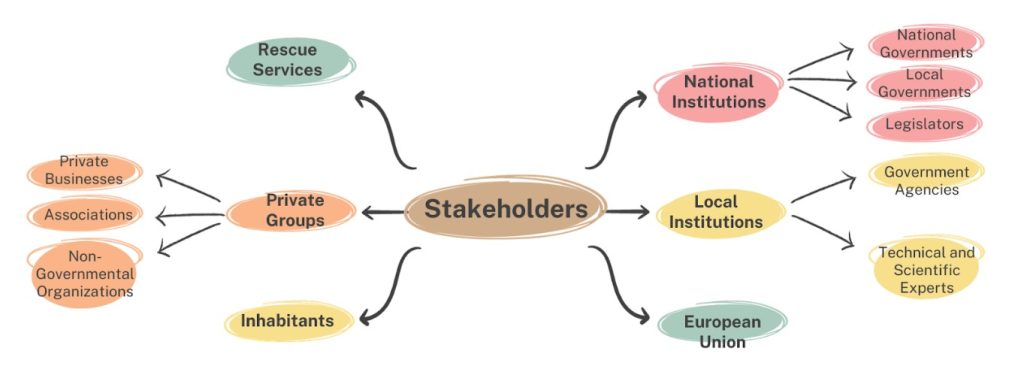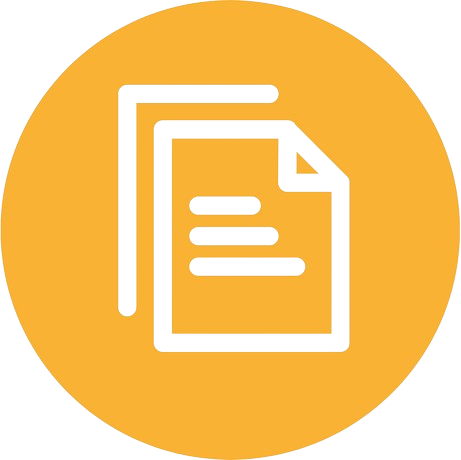The concept of competence refers to the ability or legal authority to perform a task or make decisions in a particular field. Responsibility, on the other hand, implies the obligation to account for one’s actions or inactions, especially when lives and property are at stake. In the context of flood Risk Adaptation Policies, competence relates to the capacity of stakeholders to take action, while responsibility concerns their duty to protect and manage risks. This interaction between competence and responsibility is crucial for understanding the roles of involved stakeholders.
Key stakeholders in flood Risk Adaptation Policies vary from country to country based on political, legislative, and administrative structures, as well as the nature of specific flood risks in each region and country. For example, in France, a centralized country where national powers hold significant influence in flood Risk management, national governments play a central role. In Belgium, as a federal state with a distribution of competences among government levels, local governments have an increasing influence on these Policies. In Finland, decentralization provides local authorities with significant autonomy even though the government plays a crucial role, while in England, flood Risk management is shared among different agencies. This diversity in political and administrative structures influences the distribution of competences and responsibilities in flood Risk Adaptation.
However, it is possible to identify certain stakeholders that often play a major role in these Policies.

1 National Institutions: Security guardians
National Governments: National governments play a dual role in flood Risk Adaptation. They develop Policies and strategies, coordinating efforts and resources for the entire country. Additionally, they are responsible for ensuring national security and safety during flood disasters, overseeing rescue operations and maintaining the continuity of the state.
Local Governments (Departments, Regions, Municipalities): Local authorities manage and implement national flood Risk Policies at the local level. Their responsibilities include urban and land use planning, evacuation planning, and communication initiatives. However, these responsibilities can vary in decentralized systems like France.
Legislators: Legislators, whether in national or other legislative bodies, are crucial in shaping legal frameworks for flood Risk Adaptation Policies. They create laws and regulations defining responsibilities and actions of stakeholders. Legislators ensure alignment with flood-related security concerns by establishing standards, sanctions, and incentives for effective Adaptation measures.
2 Local Institutions: On-the-ground stakeholders
Government Agencies: Specialized government agencies collect real-time data on water levels and weather conditions, model potential flood scenarios, and manage water resources and infrastructure. They provide crucial information to aid local authorities in flood Risk management decisions.
Technical and Scientific Experts: Technical experts, from various organizations, contribute specialized knowledge to flood Risk Adaptation, providing valuable advice to authorities. Consulting firms conduct studies and propose solutions, actively contributing to decision-making in flood Risk management.
3 European Union: Coordinator of Transboundary Initiatives
European Union (EU): The EU coordinates flood Risk management for member countries, facilitating cooperation, sharing resources, and promoting common Policies. It supports prevention and Adaptation actions to protect citizens and property on a European scale, fostering effective responses to flood risks through communication and theoretical tools.
DIG DEEPER…
It is much more social and about abuse but still deals with the fear of action
4 The Psychological Path of Inhabitants
Residents: Residents in flood-prone areas, with their local knowledge, actively contribute to flood Risk management. They recognize early signs, report emergencies, and assist in developing evacuation plans, becoming direct stakeholders in protecting safety, community, and property. Their involvement strengthens community Resilience to floods.
The Psychological Path of Inhabitants
In flood Risk management, the role of inhabitants is not limited to receiving information. It extends to a complex psychological process where understanding, admitting, and accepting play crucial roles:
- Understanding or Intellectual Assimilation:
Understanding flood risks requires adequate education. Beyond the mere transmission of information, it involves providing tools for a thorough understanding of the issues. Inhabitants should be able to analyze causes, consequences, and potential solutions. This enables not only knowledge appropriation but also informed participation in the decision-making process.
- Admitting or Emotional Recognition:
Admitting flood risks goes beyond simple intellectual understanding. It involves emotional recognition of the potential consequences on the daily lives of inhabitants. Awareness of emotional issues facilitates the identification of personal and community vulnerabilities, thus encouraging a deeper commitment to preventive measures.
- Accepting or Concrete Engagement:
Acceptance of flood risks represents the transition to action. Inhabitants need to be encouraged to engage concretely in preventive behaviors. This requires the establishment of mechanisms facilitating citizen participation, such as awareness programs, emergency simulations, and training on actions to take in case of flooding.
5 Rescue Services: First Responders in Crisis
Rescue Services: Rescue services, including firefighters and emergency response organizations, play a vital role in flood-related crises. Their responsibility is to swiftly and effectively respond, saving lives, providing emergency medical aid, and coordinating relief efforts. As first responders, they work closely with various stakeholders to mitigate the consequences of floods.
6 Private Groups: Civil Society Stakeholders
Private Businesses: Businesses located in vulnerable areas play a role in Risk reduction by developing protective measures for their facilities. Additionally, civil engineering and construction companies are involved in the construction of flood management infrastructure.
Non-Governmental Organizations (NGOs) and Associations: NGOs and associations dedicated to environmental protection and flood Risk reduction actively monitor and raise awareness about risks. They advocate for favorable Public policies, disseminate crucial information to communities, and organize flood simulation exercises to empower residents in Risk reduction and community Resilience.
7 Decisions, Implementation, and Consultations
Decision-making regarding flood Risk Adaptation Policies generally depends on the country’s political framework. Typically, decisions are made by governments, both at the national and local levels, with the participation of technical experts.
Policy implementation is mainly the responsibility of local governments, government agencies, and other public entities, in collaboration with private businesses and NGOs.
Consultation is an essential process to ensure that Policies take into account the needs and concerns of local communities. Citizens, NGOs, businesses, and other stakeholders are sometimes consulted in the planning and implementation of Policies to ensure a fair and inclusive approach to flood Risk management.
Want to go further?
- Flood Risk Management: a wide variety of stakeholders
- 1. National Institutions: Guardians of security
- 2. Local Institutions: Stakeholder on the ground
- 3. European Union: Coordinator of Transboundary Initiatives
- 4. Inhabitants: Multidimensional Role
- 5. Rescue Services: First Responders in Crisis
- 6. Private Groups: Civil Society stakeholder
- 7. Decisions, Implementation, and Consultations
- The Necessity of Communication Adaptation
- Explanations for the Lack of Consideration for Social justiceCONCLUSION


